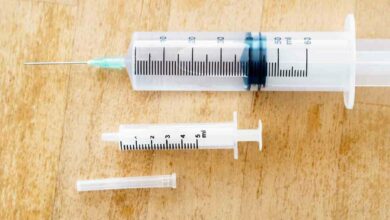Process of Nursing Research – How to Conduct It Right Way?

In a health care profession, nurses act as a link between the patients and physicians. In hospitals and wherever someone needs care, nurses provide first aid. By definition, the nurses offer collaborative and autonomous care to patients of all ages suffering from all diseases. Mostly, the physicians are specialized in only one or more fields, but the nurses are all-rounders. They provide 24/7 services to patients of any disease. The major duties of nurses include:
- Promotion of health care standards
- Prevention of illness as much as they can handle
- Patients health care in the absence or presence of physicians
Nurses not only help in improving the health facilities of the patients, but they also have duties to handle the corpse. On the other hand, the physician’s professional duties include insights into the medical complications. But, the health care routine of the patients is the top most priority of the nurses. Apart from the importance of nurses in medical / health care professionals, let’s discuss how to conduct nursing research to improve health care.
Also Read: Foods to go for Before and After a Yoga Session
Process of Nursing Research
The process of nursing research follows a few simple steps that are effective in finding relevant information. Remember, these steps are general and depending upon the research topic, and you may need to amend or rearrange them.
Step 1: Identify the research topic/ phenomenon to be explored
The first step in the nursing research process is to identify a research problem. In general, the best way is to choose a broader one. This approach will help you to narrow the topic in later stages. This approach can cater to most of the outlining or structuring problems. The lack of reported data or data shortage in the narrow topic is somewhat difficult to handle. Further, you can make many sub-headings or sections to properly structure a nursing research paper or thesis. Though, you can choose the topic of interest to conduct it in the right way. The selection of the phenomenon or process that suites best with your previous experience is also very important.
Step 2: Literature Reviewing
In nursing research, another most important step is a literature review. The literature review should start from the general point of view about the selected topic. Moving ahead, an appropriate scientific problem and finding of previously reported studies about the topic will help the nurses to reach the depth of the problem. Furthermore, the nursing relevant research paper may be any of the following ways:
- CD ROM
- CINAFIL
- Journals
- Books
- Previous Medical records and documents
- Conference papers and abstracts
- Research Paper
- Digital libraries or databases
The researchers can use many methods to reach the literature resources. But, they must remain focused on the topic of interest. Additionally, they can get help from dissertation writing services to write dissertation literature.
Step 3: Conceptual framework Development
In the nursing research process, steps 3 and 4 aim to complete the literature review. This step is a valuable part of scientific methods. Both theoretical and conceptual frameworks are important to discuss/define the characters/ variables in a study. Such frameworks direct researchers as well as the audience towards the prediction or interpretation of the findings.
Step 4: Assumption or hypotheses formulation
Like frameworks, assumption or hypotheses formulation is also a necessary part of the nursing research process. Assumptions are statements that are supposed to be true but unnecessarily proven through a research project. In general, assumptions are of three types:
- Universal Assumptions
- Assumption based on other’s research
- Assumptions that are study-specific
On the same ground, the hypotheses are the testable statement commonly known as tentative statements. These statements describe the possible relation between the variables/ characters of a study. Based on these hypotheses, either support or oppose the findings.
Step 5: Research Design selection
Once the research questions or hypotheses are formulated, the next step in the process of nursing research is a selection of appropriate research processes. Without designing an appropriate methodology, it is next to impossible to explore the underlying facts about the topic of interest. In other words, it is the plan that guides how to conduct a study. For this step, the researcher can keep in mind the following considerations:
- Type of methods that suit best to the purpose of investigation; descriptive, exploratory or experimental
- A method appropriate to explore the relationship between the variables
- A suitable person, place or things for effective data collection
- A wise selection for the tools to collect and analyze the data, for example, observation, reviews and questionnaires.
While selecting a research design, you must focus on the ethical code of conduct related to it.
Step 6: Designing a pilot study
The pilot study is a method to test the success of the proposed methodology. In other words, in the pilot study, the researcher uses a small sample size before adopting an actual one. The pilot studies suggest researchers amend the methodology if needed. It aims to fill the gaps in theoretical or practical approaches. A pilot study is equally important to both those who want to test observations as well as a questionnaire. Though, in the process of nursing research, the pilot study is not a vital element. But, it is better for those who have doubts related to the proposed methodology. A pilot study is a scientific method to gain confidence.
Also Read: Top 7 Benefits of Juicing: How Is Juicing Beneficial for Health?
Step 7: Tools for data collection
If the pilot study isn’t suggesting you anything to amend, then the next step is to collect data on a large scale. But, in case of any suggestion, you need to change the methodology first. In either case, data collection through a practice tool is the ultimate solution to this. The sample size and sample diversity are the major concern in this process.
Step 8: Statistical analysis for data interpretation
These are the techniques that aim to explore or interpret the data to investigate the uncover trend and patterns. In a broader sense, statistical analysis involves:
- Coding, classifying and grouping techniques to interpret the data.
- Counting techniques to investigate the trends among variables
Overall, statistical analysis is a technique to reduce large data set (raw data) into small data set (meaningful data).
Step 9: Reporting the findings/ Conclusion
Like other sciences, the process in nursing research also ends at reporting the findings or conclusion. At this step, the researcher must explain or conclude what he explored.
These eight steps collectively make the process of nursing research.












